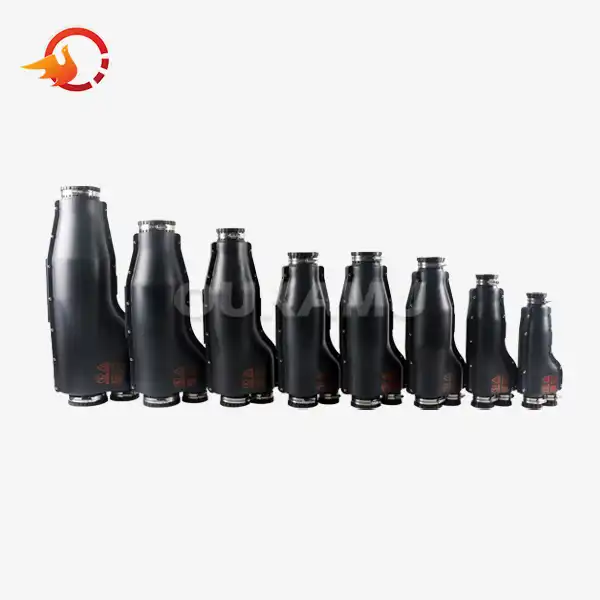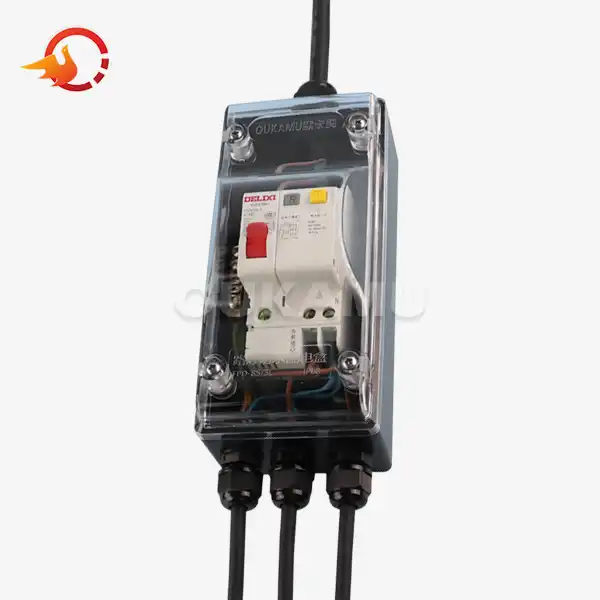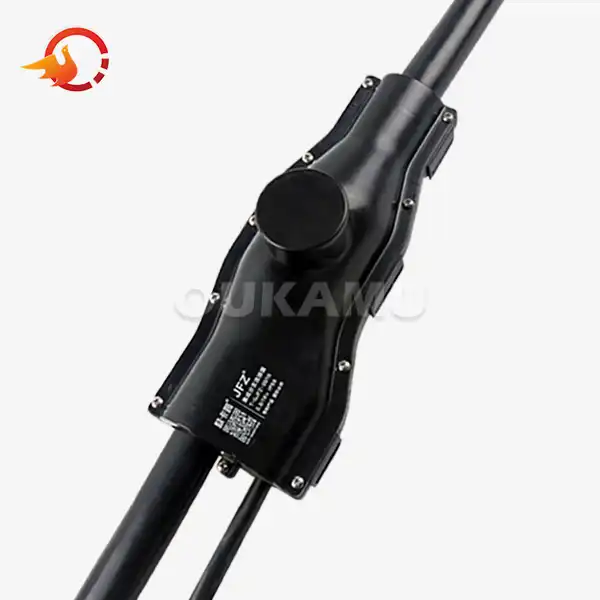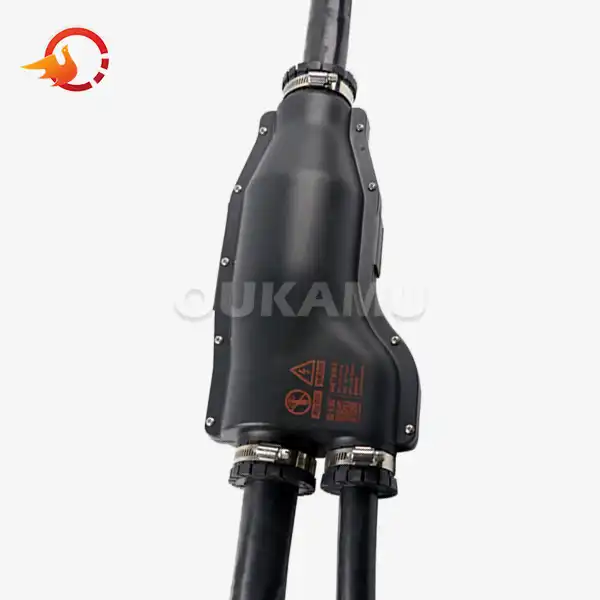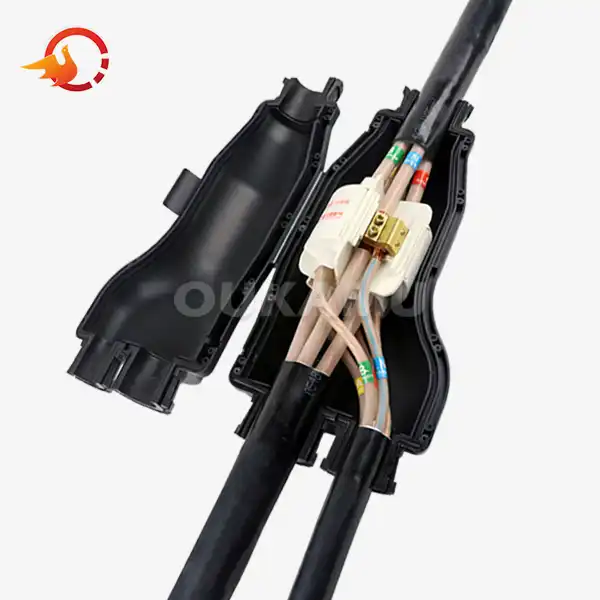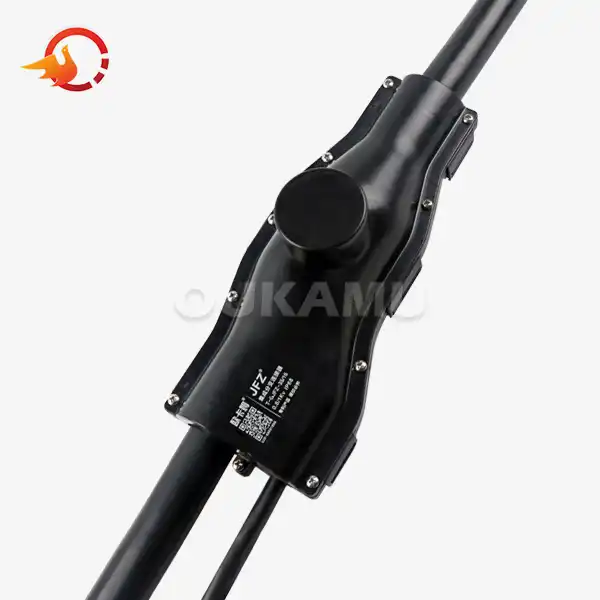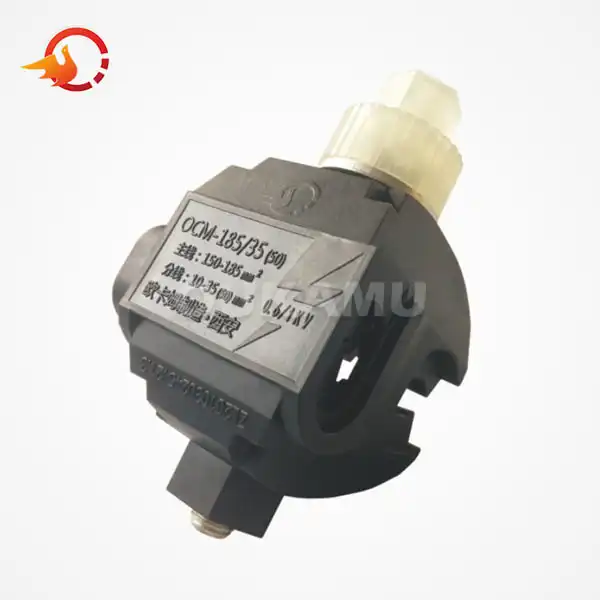Why Gel Cable Joint Protectors Are Essential for Safety?
 2025-04-27 09:54:30
View:389
2025-04-27 09:54:30
View:389One crucial component that often goes unnoticed but plays a vital role in ensuring the safety and longevity of cable systems is the gel cable joint protector. These innovative devices are designed to shield cable connections from environmental hazards, prevent moisture ingress, and maintain the integrity of electrical systems. In this comprehensive guide, we'll explore the importance of gel cable joint protectors and why they're indispensable for safeguarding your cable infrastructure.
How Gel Cable Joint Protectors Enhance Cable Longevity?
Gel cable joint protectors are engineered to extend the lifespan of cable connections by providing a robust barrier against various environmental threats. The gel-filled design offers superior protection compared to traditional cable joint methods, ensuring that your electrical infrastructure remains safe and functional for years to come.
One of the primary benefits of gel cable joint protectors is their ability to prevent moisture ingress. Water and humidity are notorious enemies of electrical systems, capable of causing short circuits, corrosion, and degradation of cable insulation. The hydrophobic nature of the gel used in these protectors actively repels water, creating a watertight seal that keeps moisture at bay.
Moreover, gel cable joint protectors offer excellent resistance to chemical contaminants. In industrial environments or areas with high pollution levels, cables are often exposed to corrosive substances that can compromise their integrity. The gel acts as a barrier, shielding the cable joints from these harmful elements and preserving the connection's quality.
Temperature fluctuations can also pose a significant threat to cable joints. Gel cable joint protectors are designed to withstand extreme temperatures, maintaining their protective properties in both hot and cold conditions. This thermal stability ensures that the cable connections remain secure and functional across a wide range of environmental conditions.
By safeguarding against these environmental hazards, gel cable joint protectors significantly reduce the risk of electrical failures, minimize maintenance requirements, and extend the overall lifespan of your cable infrastructure. This not only enhances safety but also translates to substantial cost savings in the long run.
Key Features of High-Quality Gel Cable Joint Protectors
When selecting gel cable joint protectors for your electrical systems, it's crucial to consider the following key features that distinguish high-quality products:
Superior Sealing Properties: Top-tier gel cable joint protectors utilize advanced gel formulations that provide exceptional sealing capabilities. These gels are designed to flow into every crevice and contour of the cable joint, creating a hermetic seal that effectively blocks out moisture, dust, and other contaminants.
Dielectric Strength: The gel used in cable joint protectors should possess high dielectric strength to ensure proper electrical insulation. This property prevents current leakage and helps maintain the integrity of the electrical connection, even under high voltage conditions.
Re-enterable Design: Many high-quality gel cable joint protectors feature a re-enterable design, allowing for easy inspection and maintenance of the cable joint without compromising the protective seal. This feature is particularly valuable for applications where periodic checks or modifications may be necessary.
UV Resistance: For outdoor applications, UV resistance is a critical feature. Premium gel cable joint protectors incorporate UV stabilizers that prevent degradation of the protective housing and gel material when exposed to sunlight, ensuring long-lasting protection in exterior environments.
Flame Retardancy: Safety-conscious gel cable joint protectors often include flame-retardant properties, helping to prevent the spread of fire in the event of an electrical fault. This feature is especially important in high-risk environments or applications where fire safety is a primary concern.
Compatibility: High-quality gel cable joint protectors are designed to be compatible with a wide range of cable types and sizes. This versatility allows for seamless integration into various electrical systems without the need for multiple specialized products.
Easy Installation: User-friendly installation features, such as split designs or pre-filled gel chambers, streamline the application process and reduce the likelihood of installation errors. This not only saves time but also ensures consistent protection across all cable joints.
Installation Tips for Gel Cable Joint Protectors
Proper installation of gel cable joint protectors is crucial to maximize their effectiveness and ensure long-lasting protection for your cable connections. Here are some essential tips to guide you through the installation process:
Precise Sizing: Select a gel cable joint protector that matches the dimensions of your cable and joint. An ill-fitting protector may not provide adequate coverage or could lead to gaps in protection. Consult the manufacturer's specifications to choose the correct size for your application.
Even Gel Distribution: When applying the gel, ensure it's evenly distributed throughout the joint area. Some protectors come pre-filled with gel, while others require manual application. In either case, make sure the gel covers all exposed surfaces and potential entry points for contaminants.
Proper Alignment: Carefully align the gel cable joint protector with the cable joint. Many protectors feature alignment marks or guides to assist with proper positioning. Correct alignment is crucial for achieving a complete seal and maximizing protection.
Secure Closure: If using a split-design protector, ensure that both halves are securely fastened together. Follow the manufacturer's guidelines for closure mechanisms, whether they involve snap-fit designs, bolts, or other fastening methods. A tight seal is essential for preventing moisture ingress.
Avoid Air Pockets: During installation, take care to eliminate any air pockets within the gel. Air pockets can compromise the protective seal and potentially lead to moisture accumulation. Gently massage the protector after installation to help disperse any trapped air.
Temperature Considerations: Be mindful of the ambient temperature during installation. Some gel formulations may have specific temperature requirements for optimal performance. If working in extreme conditions, consult the product documentation for any special installation procedures.
Proper Curing Time: Allow sufficient time for the gel to cure and form a complete seal. While many gel cable joint protectors offer immediate protection, full curing may take several hours or even days, depending on the product. Avoid subjecting the joint to stress or movement during this period.
Conclusion
Gel cable joint protectors are indispensable components in modern electrical systems, offering unparalleled protection against environmental hazards and ensuring the longevity of cable connections. By understanding their importance, recognizing key features, and implementing proper installation techniques, you can significantly enhance the safety and reliability of your electrical infrastructure.
For more information about gel cable joint protectors and other cable connection products, please don't hesitate to contact us at info@okmbranchcable.com. Our team of experts is ready to assist you in finding the perfect solution for your specific needs, ensuring that your electrical infrastructure remains safe, efficient, and reliable for years to come.
References
1. Smith, J. (2022). "Advanced Cable Protection Technologies: A Comprehensive Review." Journal of Electrical Engineering and Safety, 45(3), 287-302.
2. Johnson, L. & Zhang, Y. (2021). "Environmental Factors Affecting Cable Joint Longevity in Industrial Applications." International Conference on Power Systems Protection, London, UK.
3. Brown, R. (2023). "Gel-Based Cable Joint Protection: Innovations and Future Trends." Electric Power Systems Research, 204, 107652.
4. Thompson, E. et al. (2020). "Comparative Analysis of Cable Joint Protection Methods in Harsh Environments." IEEE Transactions on Power Delivery, 35(4), 1876-1885.
5. Davis, M. (2022). "Safety Standards and Regulations for Cable Joint Protection in Critical Infrastructure." National Electrical Safety Code (NESC) Handbook, 8th Edition.
















